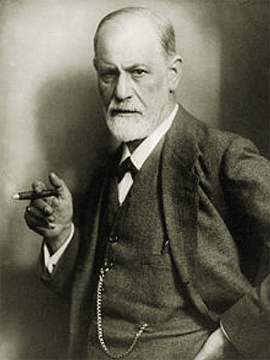Sigmund Freud
Sigmund Freud, an Austrian neurologist and founder of the psychoanalytic
school of psychiatry was born on 6th May, 1856 to Jewish Galician
parents in the Austrian Empire. Freud has put forward many theories
that have earned him the title of having been a renowned neurological
researcher.
|
|
 Sigmund Freud
Sigmund Freud |
Sigmund Freud has made vast and long lasting contributions to
the fields of psychology, psychiatry, humanities and social sciences.
His originality and intellectual influence has made him a prominent
thinker in the 20th century.
Freud attended a well known high school in Pribor. He successfully
completed his schooling in 1873 with honors. Despite his interest
to study law, he associated himself with the medical faculty at
the University of Vienna and carried out experiments on eels to
identify their male reproductive organs.
In 1885, Freud traveled to Paris to study under Jean Martin Charcot,
a famous European neurologist and researcher. Later Freud started
his own medical facility and started carrying out experiments
using hypnosis on his neurotic patients. He invented what was
known as the talking cure, in which he let his patients talk out
their problems and later became known as psychoanalysis.
Freud himself developed various psychosomatic disorders and other
phobias during his early 40s. Freud considered this phase as the
most difficult in his entire life. Sigmund Freud published 12
books in total containing his theories. Books such as "The
Interpretation of Dreams," "Beyond the Pleasure Principle,"
"Introduction to Psychoanalysis" and "Totem and
Taboo" created quite a stir.
Freud's work in psychoanalysis began because of the work of Josef
Breuer. Josef Breuer discovered the psychoanalytical method while
dealing with a patient named Anna who was suffering from what
was then known as female hysteria. Breuer treated her softly and
got to know the cause of her illness.
Encouraged by the treatment adopted by Josef Breuer, Freud used
a similar treatment in the early 1890s that he called as "pressure
technique". Freud resorted to analytic inference and symbolic
interpretation of symptoms to find out the memories of infantile
sexual abuse.
His arguments on the importance of the unconscious mind in understanding
thought and behavior is a major contribution of Sigmund Freud
to the western world. But Jacques Van Rillaer pointed out that
it was not Freud that discovered unconsciousness of the mind but
a group of psychoanalytic researchers who coined the term.
Freud turned to ancient mythology in order to prove that his
model was correct. His concept was named the Oedipus complex. Freud
always thought that the main reason for neurological disorders
was the exposure to sexual abuse as a child. He later abandoned
this theory as he could not explain it properly.

Freud's theories and concepts have always been referred to as
notorious and vague. His research has been criticized using the
most vulgar terms. However his theories form the basis of all
treatments in psychotherapy and are being widely accepted by many
all over the world even today.
Freud's theories brought him many followers. This group of people
believed that his theories and treatments could be more than just
a cure for patients suffering from hysteria or neurological disorders.
Some of the famous people who adopted Freud's theories were Alfred
Adler, Carl Jung and Karen Horney all who have made names for
themselves in the fields of psychology and psychiatry.
Rumor has it …
Sigmund Freud once made a big fuzzy coat from the furballs of
psychotic neighborhood cats. Freud would wear his furball coat
to bed at night and lick it as he was falling asleep. Theoreticians
have yet to analyze what this means.
Written by Kevin Lepton
|

